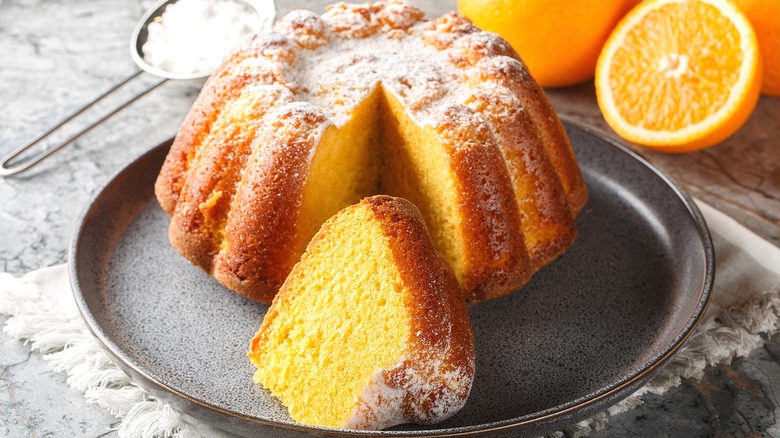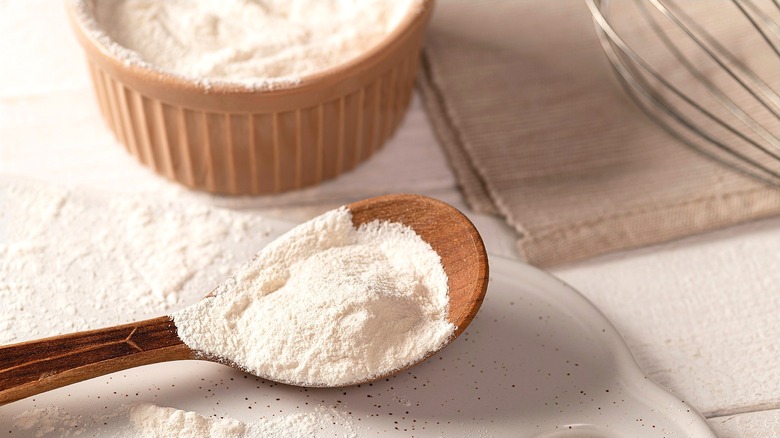Xanthan Gum Is A Key Ingredient For Pillowy Gluten-Free Cakes
Are you constantly disappointed in your attempts to make desserts like light and airy chantilly cake with berries without the use of standard flour? Unfortunately, cooking and eating gluten-free does come with a few roadblocks, especially in the world of baked goods. However, with the addition of xanthan gum, a fine powder made from the combination of sugar and Xanthomonas campestris bacteria, cakes made without wheat can still be light and fluffy.
When it comes to traditional cake recipes, gluten is usually key to consistency and texture. Proteins in flour combine with liquid to form gluten, which gives classic pastries and cakes an equal balance of structure and elasticity. Without conventional flour, finding an alternative ingredient that performs the same job is crucial. Luckily, with a small portion of xanthan gum, gluten-free cakes are able to hold a decent amount of structure, moisture, and chewiness. Xanthan gum is vegan as well as gluten-free, which makes this powdery substance appealing to home chefs with such dietary restrictions.
Besides serving as both a stabilizer and thickening agent for many different foods, when used in baking recipes, xanthan gum produces a gel-like consistency when combined with water. This viscous, moisture-rich liquid not only holds cakes together but ensures they have a soft consistency. Yet before you start adding in xanthan gum to your at-home bakes, read the ingredients list of your go-to gluten-free flour.
How to add xanthan gum to your favorite cake recipes
Sure enough, many all-in-one gluten-free flours already contain a small amount of xanthan gum. However, some gluten-free flour substitutes usually contain little to no additional ingredients. For single-ingredient flours, add xanthan gum powder to cake recipes when combining dry ingredients. Keep in mind that adding too much xanthan gum to a trusted recipe might produce overly moist and gummy results. Therefore, start by adding a very small amount and go from there.
For a soft yet sturdy crumb, use ¼ teaspoon of xanthan gum for every cup of gluten-free flour. This baseline amount gives your finished product just the right amount of elasticity and chewiness. Yet, always follow the recipe's exact measurements. Some cake recipes, including layer cakes, may require up to a full teaspoon of xanthan gum.
Even though this powdery substance gives alternative cakes a delectable consistency, xanthan gum has one potential drawback. According to Healthline, this complex sugar is considered a soluble fiber. Therefore, xanthan gum's inability to break down in the body may cause the occasional stomach ache. Luckily, chia or flax seeds mixed with water, guar gum, and cornstarch are all effective substitutions. While there are certain dessert recipes you can make without xanthan gum, such as gluten-free chocolate olive oil cake, this exclusive ingredient imparts unmatched moisture and stability to many wheat-free cake recipes.


